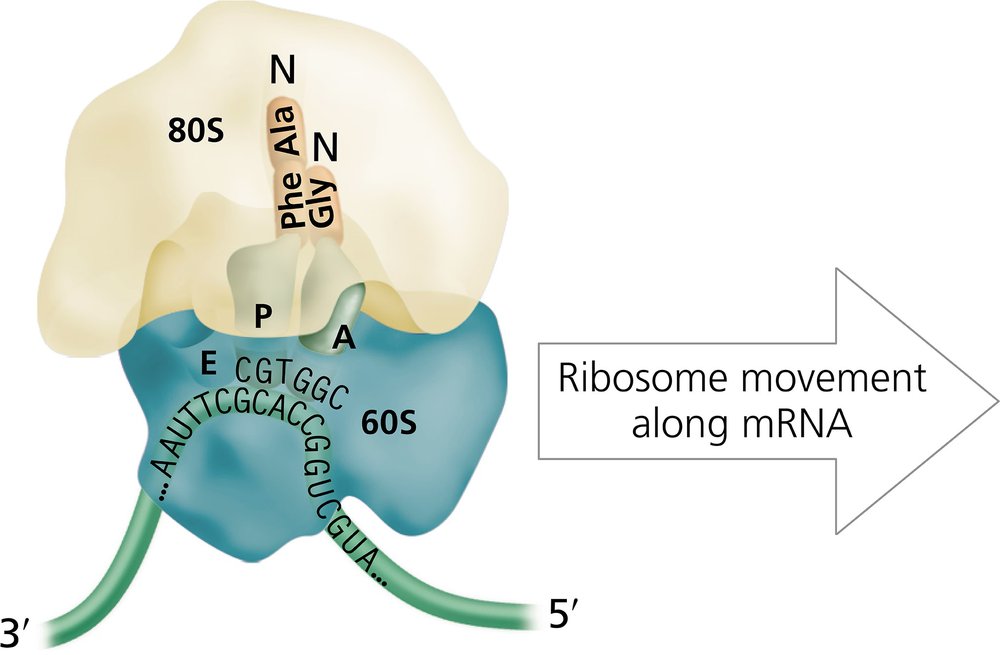Which of the following ribosomal sites is responsible for adding the amino acid to a growing polypeptide chain?
Table of contents
- 1. Introduction to Genetics51m
- 2. Mendel's Laws of Inheritance3h 37m
- 3. Extensions to Mendelian Inheritance2h 41m
- 4. Genetic Mapping and Linkage2h 28m
- 5. Genetics of Bacteria and Viruses1h 21m
- 6. Chromosomal Variation1h 48m
- 7. DNA and Chromosome Structure56m
- 8. DNA Replication1h 10m
- 9. Mitosis and Meiosis1h 34m
- 10. Transcription1h 0m
- 11. Translation58m
- 12. Gene Regulation in Prokaryotes1h 19m
- 13. Gene Regulation in Eukaryotes44m
- 14. Genetic Control of Development44m
- 15. Genomes and Genomics1h 50m
- 16. Transposable Elements47m
- 17. Mutation, Repair, and Recombination1h 6m
- 18. Molecular Genetic Tools19m
- 19. Cancer Genetics29m
- 20. Quantitative Genetics1h 26m
- 21. Population Genetics50m
- 22. Evolutionary Genetics29m
11. Translation
Ribosomal Structure
Problem 12b
Textbook Question
The diagram of a eukaryotic ribosome shown below contains several errors.

Redraw the diagram, and correct each error using the mRNA sequence shown.
 Verified step by step guidance
Verified step by step guidance1
Identify the errors in the provided eukaryotic ribosome diagram. Common errors might include incorrect labeling of ribosomal subunits, misplacement of mRNA, tRNA, or codons, or incorrect orientation of the ribosome components.
Review the mRNA sequence provided in the problem. Ensure that the sequence is correctly oriented (5' to 3') and matches the direction of translation in a eukaryotic ribosome.
Redraw the ribosome diagram, ensuring that the large (60S) and small (40S) subunits are correctly labeled and positioned. The mRNA should pass through the small subunit, with the start codon (AUG) positioned in the P site.
Correctly position the tRNA molecules in the ribosome. The tRNA carrying methionine (initiator tRNA) should be in the P site, and the next tRNA should align with the codon in the A site.
Ensure that the ribosome diagram reflects the correct translation process, including the direction of movement (5' to 3') and the proper alignment of codons, anticodons, and amino acids being added to the growing polypeptide chain.
 Verified video answer for a similar problem:
Verified video answer for a similar problem:This video solution was recommended by our tutors as helpful for the problem above
Video duration:
3mPlay a video:
Was this helpful?
Key Concepts
Here are the essential concepts you must grasp in order to answer the question correctly.
Eukaryotic Ribosome Structure
Eukaryotic ribosomes are complex molecular machines composed of ribosomal RNA (rRNA) and proteins. They consist of two subunits: the large subunit (60S) and the small subunit (40S). These subunits come together during protein synthesis to translate mRNA into polypeptides, ensuring accurate reading of the genetic code.
Recommended video:
Guided course

Ribosome Structure
mRNA Sequence and Codons
Messenger RNA (mRNA) is a single-stranded molecule that carries genetic information from DNA to the ribosome for protein synthesis. The mRNA sequence is read in sets of three nucleotides called codons, each of which corresponds to a specific amino acid. Understanding the codon sequence is crucial for accurately translating the mRNA into a functional protein.
Recommended video:
Guided course

Sequencing Difficulties
Translation Process
Translation is the process by which ribosomes synthesize proteins using the information encoded in mRNA. It involves three main stages: initiation, elongation, and termination. During this process, tRNA molecules bring amino acids to the ribosome, matching their anticodons with the mRNA codons, ultimately forming a polypeptide chain that folds into a functional protein.
Recommended video:
Guided course

mRNA Processing
Related Videos
Related Practice
Multiple Choice


